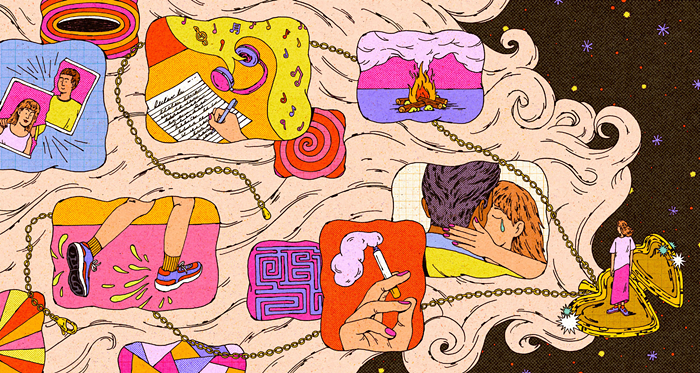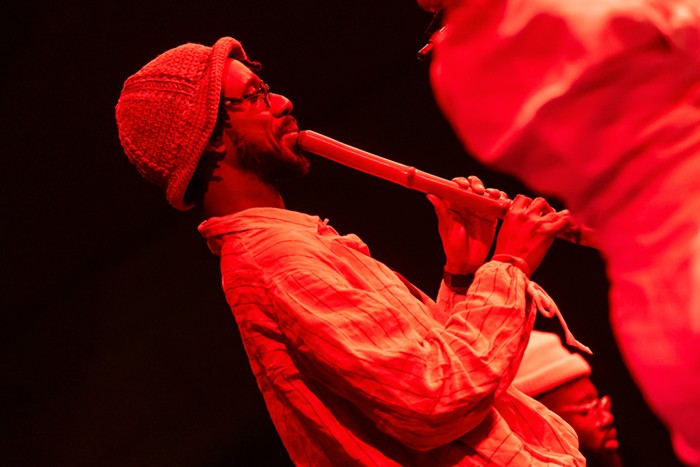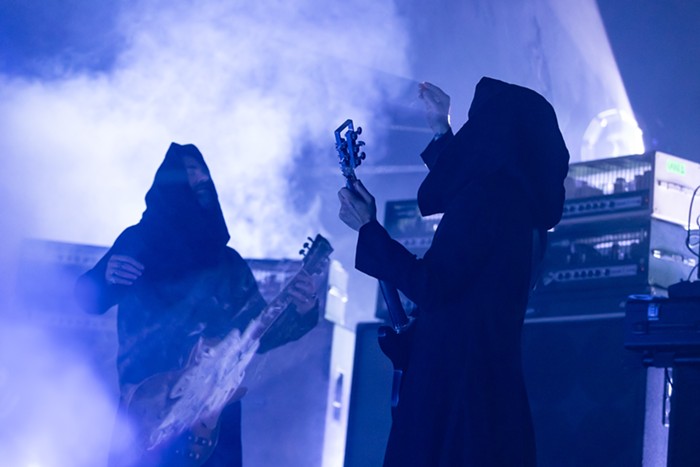Although the electric guitar remains the central icon of popular music, the microphone is surely a close rival. Perhaps the most revolutionary musical instrument of the 20th century, the microphone not only projects the voice into a large space, but silences—or at least sonically smothers—all those who hear it with its electrified volume, power, and presence. If you've taken a semi-sober turn at karaoke, you know the rush of power that comes from being louder than everyone else in the room.
Like Van Gogh's famed La Ronde des prisonniers (1890) or Trimpin's SHHH (2005), Joe Colley's installation at Jack Straw, Lonely Microphone, depicts futile, repetitive sonic action. At the center of a constricted room, a suspended microphone jammed against the floor drags, gradually inscribing a circle in a glum black carpet.
In La Ronde, prisoners clad in gloomy charcoals and browns tramp in a tight, closed ring; with its colossal pinball trapped in a circular track, SHHH is an abstract, high-tech version of La Ronde. Yet unlike those two resolutely mute loops of inscrutable, endlessly circular motion, Lonely Microphone listens and protests. Step or walk nearby, and sensors trigger blinding lights and a thunderclap of squiggly sounds like sped-up, scratched vinyl.
At a recent preview of Lonely Microphone, Colley commented, "We can close our eyes, but we can't close our ears. Microphones are witnesses."
Quoting jazz writer Joachim Ernst-Berendt, the insert to Colley's obscure 1994 disc, Aftermusic (Povertech Industries), offers a salient clue: "Machines would not be able to produce noise if we did not bear noise within ourselves. The explosions of technology parallel the explosions within our souls and minds."


















